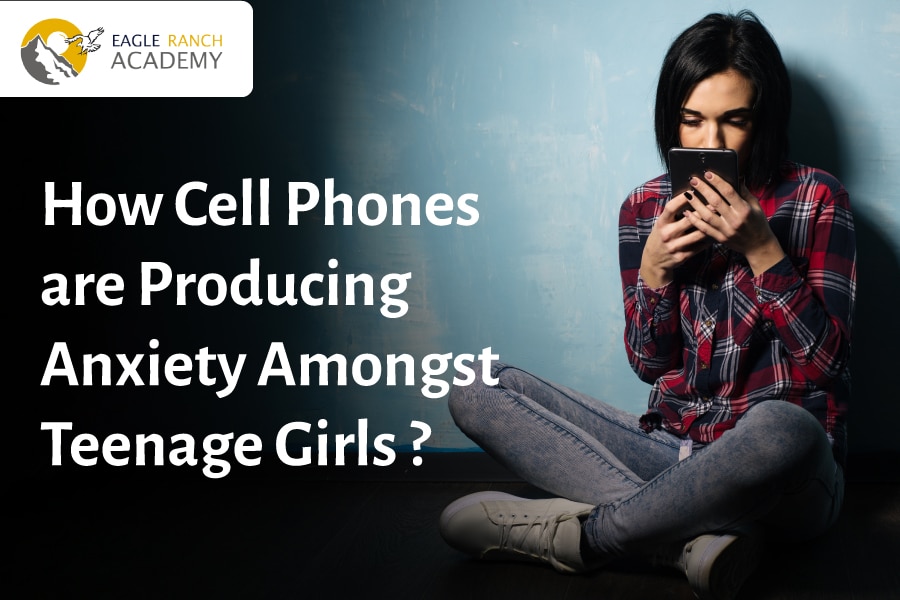The world of cell phones is overwhelming at times for all age groups. Teenagers today are are heavily reliant on the tech world for almost everything ranging from studies to networking. In most cases, addiction to smartphones and behavioral addiction seems like synonyms but they are not. Still, the pattern of smartphone abuse is avidly prevalent in young females who exhibit low self-esteem. Notably, owning a cell phone has nearly become a matter of pride in the teen life.
The range of functionalities smartphone offers widely varies and allows teenagers to have a moment of distraction from real-time events. Teenagers often come in the category of vulnerable personalities. During this age, they are undergoing many changes. Increased use of smartphones amongst them acting is a barrier when performing daily activities.
It is now a moment of concern for Parents worldwide. They are often wondering about what they can do to ease their children’s path to technology. In addition to this, it is mperative to cut down on technology altogether. Let’s take a closer look at the fundamentals that can help assess the cell phone addiction pattern.
What is anxiety? Do cell phones cause teenage depression?
Anxiety is a feeling of anxiousness (unrest) that changes from time to time as one gets older. It is an extremely natural occurrence that involves body and mind. On the contrary, there can be excessive nervousness or change in the sleeping pattern of your kid. In this case, you must pay attention to your thoughts or seek professional health.
Stressful events provoke anxiety that further results in a fight or anger-imposed reaction. The rush of adrenaline and other chemicals promotes physical sensations, including sweat, fast heartbeat, and breath. There are different anxiety disorder that reflects specific symptoms. Teenagers dealing with anxiety disorders can even feel different sensations that can be mild or upsetting.
Various research reveals that usage of smartphones is increasing at a massive rate among teenagers. This unfolds as one of the causes of depression. Several reports and studies have been carried out that show a steep rise in the incidence of major depression from 12-25-year-olds in the USA.
With the prevalence of smartphones, teenagers are indulging in deindividuated communication that is faceless. They feel that they are not accountable for their actions online as no one is monitoring them. Lack of time spent outside and rift in the parent-child relationship is another aspect that is isolating teenagers from becoming “socially disabled.”
Cell phones and sleeping habits
American Academy of sleep medicine state that it is ideal for a teenager to sleep between 8 to 10 hours a day. National sleep foundation has similar views on the sleeping hours for holistic growth. But why is it that the reports are stating either way? As per four national surveys held in America, 69% of adolescents receive less than 7 hours of sleep each day. Due to which insomnia has soared by 23.8%.
MRSRF (Mobile Related Sleep Risk Factor) are extremely prevalent in mobile users causing poor sleep quality. Many teenagers prefer to use their phones while trying to sleep. What they are not aware of is that the presence of “blue light.” Blue light is emitted by the screens of mobile phones, decreases the production of melatonin. This hormone regulates the sleep cycle or circadian rhythm. Blue light increases brain alertness and also causes sleep deprivation.
But, we can’t blame the blue light single-handedly, but the signals that transmit radiofrequency electromagnetic fields (RE-EMFs) are equally harmful. These signals pass through the human skull to reach the brain posing a danger to human health in the long run.
No sleep is harmful to health and can impact people around because teens experience an inability to focus on activities, suffer mood swings, and easily face social pressure.
How Cell Phone Produce Anxiety Amongst Teenage Girls?
Research by common sense media was done in 2016, and the result was something to give parents a reason to worry. The report said that 50% of teens who use cell phones feel addicted to mobile devices. Whereas nearly 59% of parents believe that their teenage kids are addicted to mobile devices. What’s alarming is that 72 % of teens need to respond to social media texts and messages immediately.
Another research was conducted in 2018. It said that 50 percent of teenage girls are addicted online users with near-constant screen-time, compared to 39 % of boys. Whereas 95% of teens have access to a smartphone.
Now, this brings us to our next point of concern: What are the symptoms of Cell Phone addiction?
Here are some of the symptoms that fall in the criteria of cell phone addiction.
Sudden urge to use cell phones:
The urge of using cell phones indeed the biggest symptom of teenage cell phone addiction. Using phones again and again for checking the notifications is a part of addiction as well.
Overlooking studies after cell phones:
This may sound a little bizarre but overlooking studies after cell phone is another symptom of cell phone addiction. Students fall prey to distractions like cell phones, and it’s after their studies that they face the burnt.
Not having many “Real” friends:
Another symptom of cell phone addiction is not having real human friends. Children these days are so engrossed in their social media that human circle takes a toll. They gradually forget the real human social circle that surrounds them.
Behavioral changes:
Cell phone addiction can be clearly visible in the behavioral pattern of teenagers. Sometimes teen becomes angry or uneasy seeing the poor network connection. In that case, there are possible chances of cell phone addiction.
How one can take a break from cell phones ?
Spending time on cell phones is a mixed bag of emotions, especially for teenagers. Despite getting their hurt eyes hurt, teenagers get exposure to a plethora of information that helps their social development. However, if you want your teenage girls to take a break from cell phones. You can try the following to feel good about yourself.
Limit your phone time:
No matter how much teenage lives revolve around cell phones, putting a limitation is a must. Aim to reduce teenage screen time as much as possible. Apart from daily classes and lectures, set a goal of only 1 hour a day and see if your teen can work their way down from there. If possible, try shifting the teenage school classes to laptop and desktop computers.
Use the phone for good :
If you look at the research, then the bad things about the cell phone outweigh the good stuff. But, with the negative side of technology, the devices come with plenty of positives too. In this ever-changing world, your teens can’t escape from social media. So, the next time your teenage girl pop on a social media channel, search for some groups that match their interests and passions.
Choose the social media circle wisely:
If you want your kid to take a break from social media, then keep an eye on what sort of websites they operate. Closely monitor their activities on the web browser. Also, try to be more aware of the type of people and organizations your teen follows on social media. Remember, in today’s unsettling world, the last thing these tender brains need is negativity.

